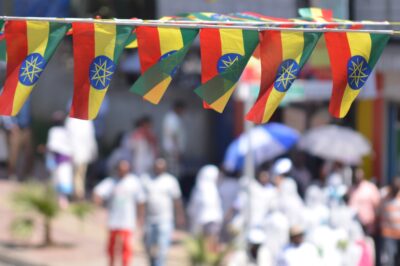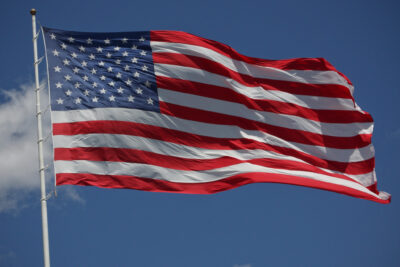“Asian American religions: Everywhere, all at once” invites readers to the multiverse of religious experiences in Asian America. This set of essays, co-curated by The Immanent Frame and the Asian Pacific American Religions Research Initiative (APARRI), offers a glimpse of the vastness and complexity of Asian American religions. Today, Asian Americans are not only the fastest-growing racial group, but the most religiously diverse one in the United States. According to the latest findings, 34 percent are Christian (of which 10 percent are Catholic), 10 percent Hindu, 9 percent Buddhist, 8 percent Muslim, and 34 percent unaffiliated. Asian American religious experiences also differ along important lines of ethnicity, generation, and class, making it impossible to speak of any one thing called “Asian American religion.” Moreover, as Rupa Pillai’s essay on Guyanese Indo-Caribbean Hindus demonstrates, the term “Asian American” is itself fraught and multilayered, often forged upon overlapping colonialisms and selective migrations.
Following the lead offered by contributor Kathy Chow’s discussion of Daniel Kwan and Daniel Scheinert’s acclaimed Asian American film, we suggest that Asian American religious life and communities are in fact “Everything Everywhere All at Once”: located throughout the nation, defying laws of coherence with proliferating possibilities, yet too often invisible or disregarded at the margins of scholarly work on race and religion in the United States. The essays in this forum present case studies of how critical analyses of Asian American religions challenge categorical, epistemological borders. The scholars we have assembled offer productive glimpses of what the study of faith, practice, belief, and beloved community could be. This collection illuminates the complexity of lived religion and the intersectional, unexpected ways in which “consent and reciprocity,” what Chow calls “the two desiderata of liberal democracies,” interact within Asian America. Scholarship on Asian American religious experiences challenges three hegemonic approaches and conventional narratives within the study of religion in America: a Black-white racial paradigm, a Christian-non-Christian binary, and Western definitions of religion.
The racial illegibility of Asians trapped within America’s Black-white racial binary, sociologist Jerry Z. Park notes, is a prominent theme in the study of Asian American religions. For instance, of his childhood, Muslim theologian Martin Nguyen writes, “In that past, I was neither Black nor white, but otherwise.” America’s legal legacy that once reserved rights of citizenship to only “free white men” and “Africans of nativity or descent” is a thread that runs through the fabric of Asian American religious lives. Contributor Philip Deslippe argues for a new history of yoga in the United States by highlighting how South Asian Americans in the early twentieth century used religion to push against the limits of race at a moment when their racial ambiguity afforded them few rights and opportunities. As the notable 1924 Bhagat Singh Thind Supreme Court case closed the doors of citizenship to South Asian immigrants, many remade themselves into swamis and yogis, capitalizing on the popular exotic stereotypes that abound at the time (and still do).
Today, many in the United States identify with the “Asian American” racial category that emerged out of civil rights struggles and identity movements from the 1960s. Yet this panethnic racial grouping still feels inauthentic or exclusive to some (e.g., Pacific Islanders, younger Asian Americans). The term struggles to gain traction, especially among immigrants of Asian descent from beyond Asia, as Pillai’s essay demonstrates. Pillai unpacks how Indo-Caribbean Guyanese immigrants—who observe multiple religions including Hinduism, Islam, and Christianity—ground their new identities and US communities in Hinduism to gain recognition and political legibility in New York. Then and now, religion has offered Asians in America an alternative basis to recreate self and community apart from the problematics and limitations of race.
Race, however, is not the only differential in the equation of US religion and belonging. Contributor Kathryn Gin Lum reminds us that there are “two different but interlocking religio-racial systems in the United States: one that operates through a Black-white paradigm, and the other through a Christian-heathen binary.” The Christian-heathen binary, or rather continuum (as Asian American Christians never reach a status comparable to Irish Catholics, as historian Gin Lum notes), further marginalizes Asian American religious subjects and obscures, if not erases, rich traditions of devotion and practice. For instance, contributor Funie Hsu documents how Asian American Buddhists continue to be “marked with the scarlet letter of heathenry,” even among fellow Buddhists who are white and Asian Americans who are Christian: white Buddhists condemn Asian American Buddhist practices as “inauthentic cultural trappings,” while Taiwanese Christians deem Taiwanese Buddhism “superstitious.” Nonetheless, Hsu writes that Asian American Buddhists “persist in their devotion to their faith, thereby transforming their collective and individual suffering.” Such expressions are easy to miss, rituals and traditions lost within hegemonic constructions of race and religion. Readjusting the focus on Asian American religious life counters these constructions, recognizes religious agency, and unfolds imaginative possibilities that can extend the complexity of lived religion.
Asian American Christians, despite their apparent “Christian privilege,” are also overshadowed by a Black-white paradigm that often makes their experiences and roles invisible and irrelevant. But we miss an important counter narrative of American evangelicalism—one that moves beyond the familiar tales of political conservatism and white Christian nationalism—if we fail to consider Asian Americans. Contributor and historian Jane Hong recounts how racial marginalization led the early Asian American Agape Community in the 1970s to create a distinct evangelical identity, politics, and religion from whites, one that was committed to racial justice and solidarity. That legacy continues in contemporary Asian American evangelical political behavior, according to contributor and political scientist Janelle Wong. On issues as varied as climate change and health care reform, Asian American evangelicals are far more progressive and liberal than white evangelicals. Yet these notable voting and political patterns have largely gone unnoticed in the scholarship on American Christianity and have been passed over for more familiar tropes about evangelicals as conservatives and Asian Americans as the compliant model minority. “In a time of anti-Asian violence and white Christian nationalism,” Hong concludes, “to be an Asian American and a Christian means to belong nowhere.”
Taking Asian American spiritual beliefs and practices seriously requires us to rethink the very category of religion outside of the Christian norms of religious exclusivity, congregation, clergy, and creed. Thirty-four percent of Asian Americans claim to have no religious affiliation. Yet this category, along with others, fails to capture the beliefs, practices, and embodied spirituality of many Asian Americans, especially immigrants. The essays by historian Melissa May Borja and Muslim theologian Nguyen illustrate how refugees from Southeast Asia—people on the move—create lives that resist and defy religious boundaries. Many Hmong refugees honor ancestral “animistic” rituals and practice shamanism, alongside adherence to the Christianity they learned from their sponsors in America. In resisting conventional religious categories, Hmong refugees are “transreligious,” Borja writes. Similarly, Nguyen describes how his recently converted Catholic family melded Hail Marys with Vietnamese rituals of incense sticks, herbaceous dishes, and the donning of white garments and hoods during his grandmother’s funeral (and this story is recounted from the perspective of his own Muslim faith and scholarship). The creative mixing of practices is born out of a history and lived experience of dislocation and liminality—an existence that is between borders, between races, and between religions.
Asian American religious innovations compel us to reconsider how people may not practice only one religion, in one place, at one time, but practice religions “everywhere, all at once.” We invite you to take the leap into the multiverse to track themes of intersectionality, affiliation, exclusion, kinship, estrangement, and reconciliation. Our interdisciplinary forum offers provocative theoretical possibilities about new methods and approaches as well as the new stories that can be told when one integrates Asian Americans in the study of US religions.













